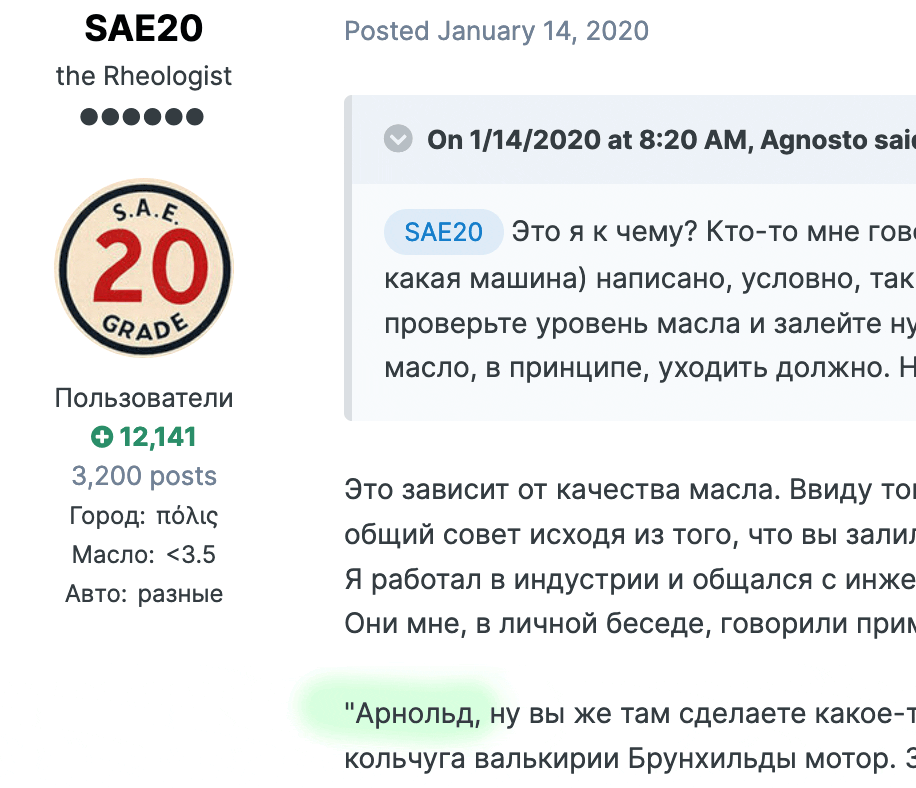QST99 писал(а): ↑28 май 2023, 14:27А где эта тема?
https://tinyurl.com/tungstensae
QST99 писал(а): ↑28 май 2023, 14:27
Арнольд- это ник?
Имя, типа - "мистер Белый"

- arnoldo.gif (78.66 КБ) 6115 просмотров
QST99 писал(а): ↑28 май 2023, 14:27
Посему с картинок я не смогу перевести, только с текса с помощью гуглпереводчика.
Окей, даю все тексты с картинок (это картинки 1970х и 1980х) -
Bffect of Detergent - Inhibitor Package on Deposit Formation - Further investigations were carried out using the panel coking test (Method B) In order to determine whether there is any effect of detergents, dispersants and Inhibitors on deposit formation.
First of all, various types of metallic detergents were compared for deposit formation at the same sulfated ash level of 0.7 wt%.
Test ofls formulated with the same zinc dialkyldithiophosphate (ZDTP-at 0.12% of Zn), dispersant, VI improver and friction modifier, and different metallic detergents were examined using the panel coking test.
As
illustrated in Fig. 9, while magnesium sul-fonate, calcium salicylate and barium phos-phonate were not so good in reducing deposit formation, calcium phenate B was effective.
Examples of organic compound applications include molybdenum acetylacetonate as a catalyst for the polymerization of ethylene and for the formation of polyurethane foam, molybdenum oxalate in certain photochemical systems, and molybdenum dithiocarbamate as a lubricant additive.
Applications.
Approximately
85%
of molyb-
Shoji and Sakurai have compared ZDP with oil-soluble organo-molybdenum-dithiocarbamate (MoDC,
in thietardamaroperties when theys coexist with ethere omnaundsitin ur in mide
published work). The effects of adding lauryl amine, cumylperoxide, and succinimide to oils containing ZDP or MoDC on the antiwear performance were examined by using the four-ball machine (FBM). These results are shown in figures 10 and 11. Figure 10 shows 0.1 wt% cumylperoxide added to ZDP (1000 pm as Zn) oil and to MoDC (600 pm as Mo) oil. ZDP was more strongly affected by the addition of cumylperoxide (fig. 10(a)) than was MoDC (fig. 10 (b)). The wear scar diameter obtained in ZDP was about 1.4 times larger than that in MoDC. Similar results are shown in figure 11 when 1.0 wt % lauryl amine was added to these two oils. The wear scar diameter obtained in ZDP was considerably larger than that in MoDC. From the results of FBM, it is observed that lauryl amine interacts very strongly with ZDP to decrease its antiwear properties. Succinimide also strongly interacts with ZDP. In FBM tests, MoDC with succinimide oil showed negligible wear (0.00 mg/3 balls). On the contrary ZDP oil with 3 wt% succinimide (high basicity, 2 wt% in N con-centration) allowed greater wear (0.3 mg/3 balls) under the same conditions.
New oils by Castrol
CASTROL LTD. has applied what is claimed to be a new
concept in additive technology to the concern's two principal engine oil grades, Castrolite and Castrol XL. In contrast with an oil-soluble compound that reacts chemically with the metal surfaces that it is designed to protect, a new patented liquid tungsten additive is employed in the oils. This combines with another additive in boundary conditions to give both oils improved friction-reducing and anti-wear properties and, in the case of XL, better deposit control and viscosity characteristics.
These provide improvements in cil-consumption control and cold starting.
The new formula Castrolite has a viscosity range SAE 10W/30, whilst XL is a 20W/50 oil, the viscosity of the latter having been extended from SAE 30/40. Liquid tungsten is a long chain tertiary alkyl primary amine tungstate.